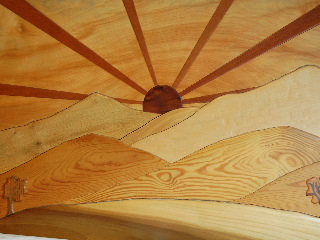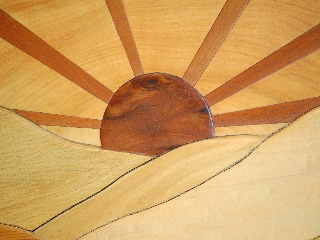
Plant succession is the natural process whereby one plant community replaces another plant community.
Extended over a period of time, these changing plant communities will lead to a mature state of being that contains species that are ecologically suited to occupy and dominate their site throughout ongoing generations.
This mature state is called the climax community, and the plants that thrive in this state are the climax plants.
In the forest communities of the Southeastern United States, these plants would be primarily oak and hickory trees--and this is the climax forest, a forest dominated by species of oak and hickory trees.
In the more Northeasterly forested areas of the United States, maples would be more common among the dominant tree species.
We’ll illustrate how this process of plant succession happens by assuming that a site has been cultivated and used for growing agricultural crops (corn or wheat) for a number of years.
Natural plant succession begins when the cultivated field is abandoned and no longer tended as a managed agricultural site.
The first plants to invade such a site (“pioneer” plants) would be the annual weeds and grasses whose seeds are blown into the site by the wind or dispersed onto the site by the droppings of birds.
These plants will re-seed themselves and occupy the site for a few years before being slowly replaced by communities of perennial grasses, herbs, and low-growing shrubs and other woody vegetation.
Next in line to invade the site will be the softwood trees, like the pines and cedars, that will grow quickly and regenerate themselves on the site, as some of the faster growing hardwood trees (like tulip poplar) also begin to seed themselves into the community.
As these trees grow on the site and drop more decomposing organic matter onto the soil, the forest floor begins to develop more fertility and depth, and the stage is set for the arrival of the more dominant hardwood trees like the oaks and hickories.
The life span of the pines is rather brief (25 to 35 years) while the hardwoods have much longer lives (some in excess of 100 years).
The softwoods are intolerant of shading and therefore begin to die out as the taller, more long-lived hardwoods overshadow them and utilize more of the nutrients from the forest floor below and more of the sunshine from above.
From the abandoned field stage, that was the beginning of this experiment in plant succession, to the attainment of a mature climax forest that is dominated primarily by species of oak and hickory trees, can take a time period of 80 to more than 100 years.

Plant succession has been studied for a number of years, and was even mentioned by the great writer and naturalist Henry David Thoreau. I like to think he thought of this whole magical and mysterious process as just another incredible example of the miracle that is Nature--that, left to its own devices--the Earth and its natural inhabitants will move deliberately (though slowly) to a state of being far greater than anything we mortals could create.
To me, this is the poetry of the forest--that an abandoned field could transform itself into a magnificent oak-hickory forest.
The accompanying photos are of a headboard that was built quite a few years ago.
At the bottom of the piece, the woods are the softwoods of poplar and pines. The two woods that touch the sun are pieces of oak and hickory.
The sun is made of an “imperfect” piece of mahogany that was being discarded by a furniture reproduction company--as if anything Nature created could be imperfect.
 Plant succession is the natural process whereby one plant community replaces another plant community.
Plant succession is the natural process whereby one plant community replaces another plant community.
 Plant succession has been studied for a number of years, and was even mentioned by the great writer and naturalist Henry David Thoreau. I like to think he thought of this whole magical and mysterious process as just another incredible example of the miracle that is Nature--that, left to its own devices--the Earth and its natural inhabitants will move deliberately (though slowly) to a state of being far greater than anything we mortals could create.
Plant succession has been studied for a number of years, and was even mentioned by the great writer and naturalist Henry David Thoreau. I like to think he thought of this whole magical and mysterious process as just another incredible example of the miracle that is Nature--that, left to its own devices--the Earth and its natural inhabitants will move deliberately (though slowly) to a state of being far greater than anything we mortals could create.